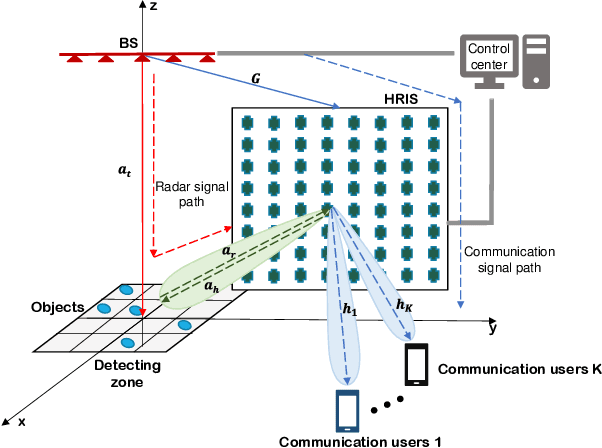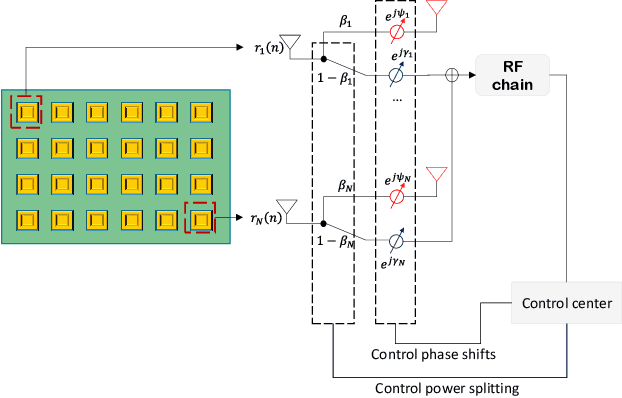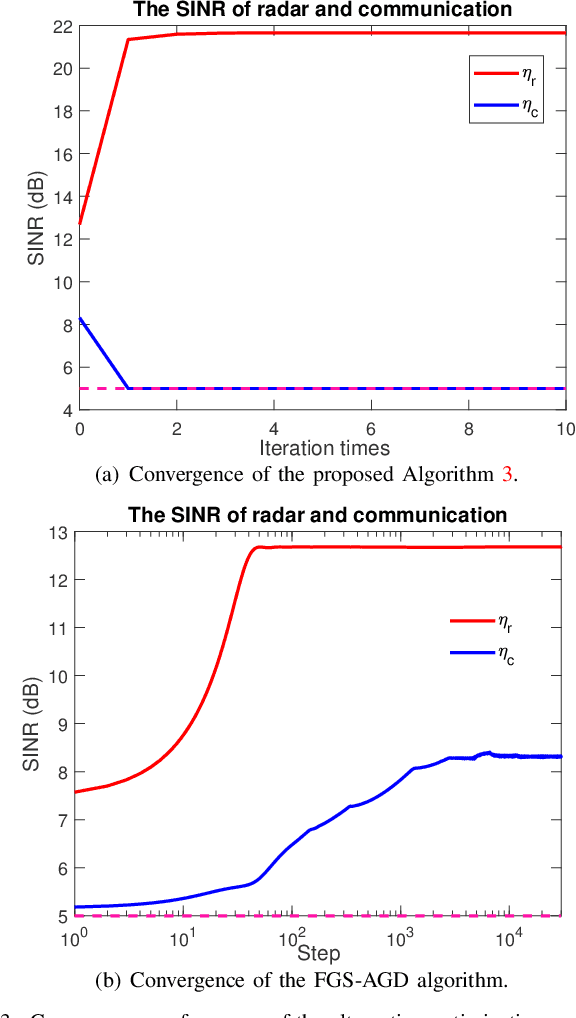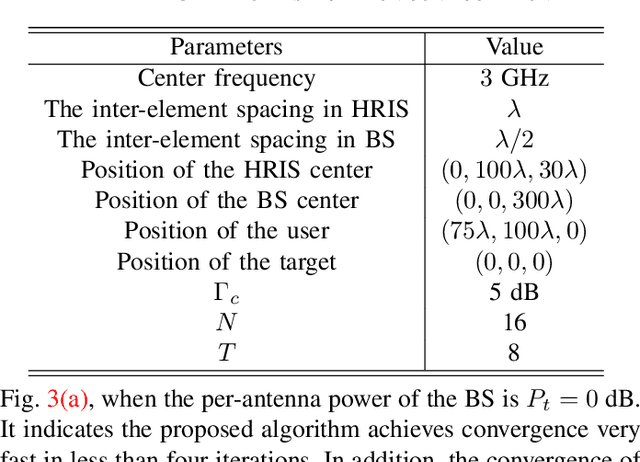Hybrid RIS-Assisted MIMO Dual-Function Radar-Communication System
Paper and Code
Mar 28, 2023



Dual-function radar-communication (DFRC) technology is emerging in next-generation wireless systems. Reconfigurable intelligent surface (RIS) arrays have been suggested as a crucial sensor component of the DFRC. In this paper, we propose a hybrid RIS (HRIS)-assisted multiple-input multiple-output (MIMO) DFRC system, where the HRIS is capable of reflecting communication signals to mobile users and receiving the scattering signal reflected from the radar target simultaneously. Under such a scenario, we are interested in characterizing the fundamental trade-off between radar sensing and communication. Specifically, we study the joint design of the beamforming vectors at the base station (BS) and the parameter configuration of the HRIS so as to maximize the signal-to-interference-and-noise ratio (SINR) of the radar while guaranteeing a communication SINR requirement. To solve the formulated non-convex beamforming design problem, we propose an efficient alternating optimization approach. In particular, for fixed beams at the BS, we use a fast grid search-assisted auto gradient descent (FGS-AGD) algorithm to seek the best HRIS configuration; Then, a closed-form BS beamforming solution is obtained using semidefinite relaxation. Numerical results indicate that compared with benchmark schemes, the proposed approach is capable of improving the radar performance and communication quality significantly and simultaneously.
 Add to Chrome
Add to Chrome Add to Firefox
Add to Firefox Add to Edge
Add to Edge